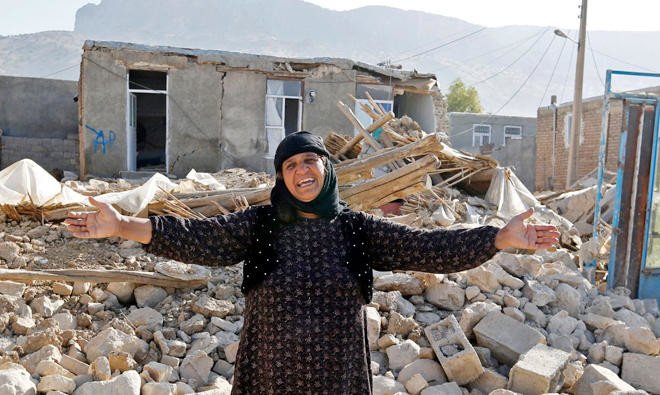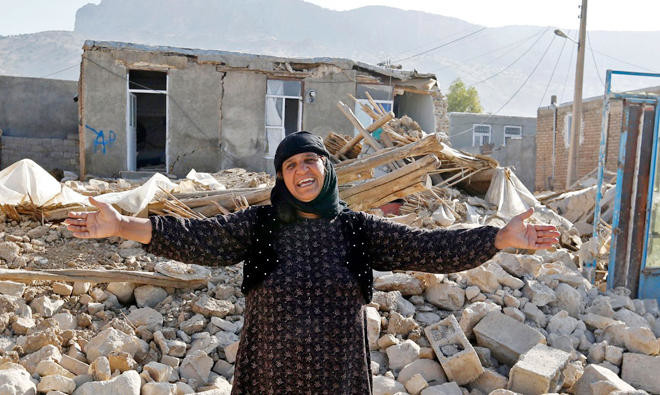On the early morning of June 21, tragedy once again shook the soul of Iran. A powerful Earthquakes in Iran and , one in a long history of seismic heartbreaks for the region, struck near the town of Tark—about 400 km (250 miles) northwest of Tehran—at 02:17 local time (22:47 GMT). The tremor, measuring 7.7 on the Richter scale, devastated communities near the Caspian Sea, claiming an estimated 50,000 lives and injuring more than 135,000 others.
Earthquakes in Iran Escalate
Explore how earthquakes can trigger conflict escalation, disrupt societies, and challenge global responses. Learn the link between natural disasters and geopolitical tensions.

With most residents asleep, entire towns crumbled in seconds. A 20,000-square-mile region across the provinces of Zanjan and Gilan—home to farmland, fishing villages, and popular seaside resorts—was reduced to rubble. Along an 80-mile stretch, entire towns were leveled, leaving no survivors. It was one of the deadliest natural disasters in Iranian history.
Compounding the horror, a 6.5-magnitude aftershock the following morning caused a dam to burst in Rasht, inundating fertile farmland and wiping out villages downstream. Landslides blocked critical access routes, delaying rescue teams and sealing the fate of many still trapped beneath collapsed homes. With rescue efforts hampered by damaged infrastructure, many suffocated under the debris before help could arrive. In total, around 400,000 people were rendered homeless overnight.
Despite longstanding tensions, global humanitarian aid poured in. The Iranian government reluctantly accepted assistance from the United States but rejected offers from Israel and South Africa. Even among those welcomed, many relief teams from Western nations were asked to leave prematurely, their missions cut short by geopolitical sensitivities.
A Nation Still on Edge

The earthquakes in Iran continues to grumble beneath Iran, as a reminder of both its geological volatility and its geopolitical fragility.
On a more recent Friday, northern Iran was again rocked—this time by a magnitude 5.1 Earthquakes in Iran, centered near Semnan, about 145 miles east of Tehran. Although the tremors were lighter and no major damage was reported, its location raised alarm bells internationally. The quake struck alarmingly close to the Fordow nuclear facility in Qom Province, a sensitive site closely watched by foreign powers.
This seismic activity coincided with a series of Israeli airstrikes targeting Iranian military infrastructure in the southwest of the country. An air defense site in Behmai Province, known as Magar, was hit amid escalating conflict between Iran and Israel. According to reports from Israeli outlet ynetnews, three surface-to-surface missile launchers—allegedly positioned to strike Israel—were destroyed. The Israeli Defense Forces (IDF) also claimed that a “cell” of Iranian soldiers, including an Islamic Revolutionary Guard Corps (IRGC) commander, was eliminated before they could launch an attack.
While there is no indication that the earthquakes in Iran was connected to the military strikes, the simultaneity of these events underscores the deep tension gripping the region. Iranian state media reported tremors being felt as far as the capital, further rattling a population already uneasy from international hostilities and domestic instability.
Hope Amid the Rubble Earthquakes in Iran
Despite the destruction and sorrow, stories of resilience have begun to emerge. Emergency crews, operating in 41 villages affected by the latest quakes, have been distributing survival kits, cooking equipment, tents, and blankets to displaced families. Much of the worst damage was concentrated in the small villages of Varnakesh and Varzaghan, where up to 30 homes were destroyed near the epicenter.
As Pirhossein Kolivand, Iran’s emergency medical chief, assured on state television: “Rescue teams and helicopters have been dispatched… hospitals are on full alert to help injured people.” Most injuries, he noted, were sustained during panicked attempts to flee collapsing buildings—many victims crushed in stampedes or struck by falling debris.
More than 60 aftershocks have been reported so far, further traumatizing communities. And yet, Iran endures—scarred, grieving, but unbroken.
A Land Between Fault Lines and Frontlines
Iran lies at the crossroads of natural and political fault lines. While the ground beneath remains unpredictable, the conflict above the surface threatens to ignite further instability. The juxtaposition of natural disaster and military conflict reflects the dual challenges Iran faces: rebuilding from nature’s wrath while bracing against man-made aggression.
As Supreme Leader Ali Khamenei recently vowed, “Iran will never surrender.” Whether in the face of earthquakes or escalating regional conflict, the Iranian people’s endurance continues to be tested—but also proven.
In these tremors—both literal and figurative—we are reminded of how fragile yet resilient human lives can be. For Iran, the road ahead remains uncertain, but it is a path already well-worn by strength, sorrow, and survival.
Conclusion:
Earthquakes in Iran are not only natural disasters but also potential catalysts for conflict escalation. Their devastating impact on infrastructure, governance, and communities can expose underlying political, economic, and social tensions. When emergency response is inadequate or unequally distributed, it can fuel unrest and deepen existing divisions. Understanding the intersection between seismic events and conflict is crucial for building resilient societies that can withstand both natural and human-made crises. Proactive planning, equitable relief efforts, and strong international cooperation are essential to prevent natural disasters from spiraling into broader geopolitical instability.

